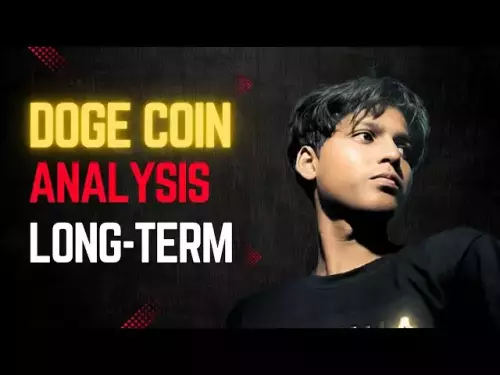-
 Bitcoin
Bitcoin $111500
0.05% -
 Ethereum
Ethereum $4439
1.69% -
 XRP
XRP $2.868
1.24% -
 Tether USDt
Tether USDt $1.000
-0.01% -
 BNB
BNB $859.0
1.00% -
 Solana
Solana $211.2
3.36% -
 USDC
USDC $0.9997
-0.03% -
 Dogecoin
Dogecoin $0.2177
2.23% -
 TRON
TRON $0.3403
0.32% -
 Cardano
Cardano $0.8351
1.20% -
 Chainlink
Chainlink $23.62
1.09% -
 Hyperliquid
Hyperliquid $45.59
1.56% -
 Ethena USDe
Ethena USDe $1.001
0.00% -
 Sui
Sui $3.368
2.46% -
 Bitcoin Cash
Bitcoin Cash $599.2
3.37% -
 Stellar
Stellar $0.3648
0.00% -
 Avalanche
Avalanche $25.30
4.74% -
 Hedera
Hedera $0.2213
2.22% -
 Cronos
Cronos $0.2714
3.55% -
 UNUS SED LEO
UNUS SED LEO $9.504
-0.78% -
 Litecoin
Litecoin $112.6
0.94% -
 Toncoin
Toncoin $3.179
0.95% -
 Shiba Inu
Shiba Inu $0.00001247
0.37% -
 Polkadot
Polkadot $3.863
1.58% -
 Uniswap
Uniswap $9.631
0.60% -
 Bitget Token
Bitget Token $5.067
0.00% -
 Dai
Dai $1.000
0.01% -
 World Liberty Financial
World Liberty Financial $0.2154
-6.17% -
 Monero
Monero $269.4
2.09% -
 Aave
Aave $325.8
3.92%
What is a perpetual contract in crypto futures?
Perpetual contracts are crypto futures with no expiry, using funding rates to stay aligned with spot prices, enabling leveraged long/short trading on platforms like Binance and Bybit.
Sep 03, 2025 at 07:00 pm
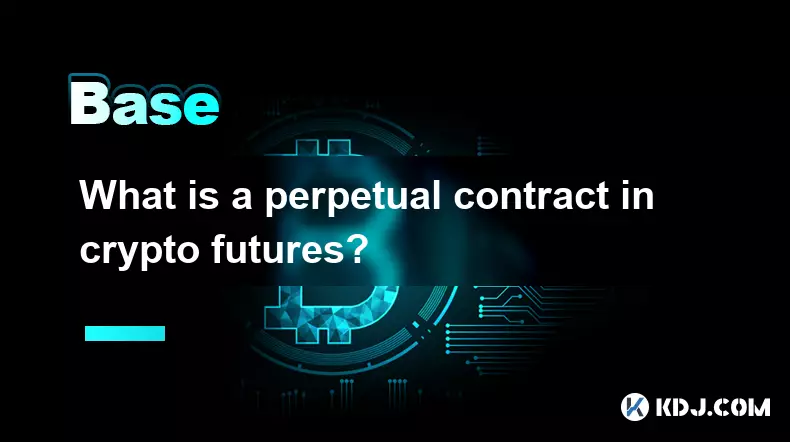
Understanding Perpetual Contracts in Crypto Futures
1. A perpetual contract is a type of futures agreement that does not have an expiration date, allowing traders to hold positions indefinitely. Unlike traditional futures, which settle on a predetermined date, perpetuals are designed to mirror the spot price of the underlying asset through a mechanism known as funding rates.
2. These contracts are primarily used in cryptocurrency trading, where volatility and 24/7 market access make them highly attractive. Traders can go long or short on assets like Bitcoin or Ethereum without owning the actual coin, leveraging their capital to amplify gains—or losses.
3. The price alignment between the perpetual contract and the spot market is maintained through periodic payments called funding rates. When the contract trades above the spot price (a state known as premium), long position holders pay short position holders. When it trades below (a discount), the flow reverses.
4. Funding rates are typically settled every 8 hours and are calculated as a percentage of the position’s value. This mechanism discourages prolonged deviations from the spot price and ensures the contract remains anchored to real market value.
5. Exchanges such as Binance, Bybit, and OKX offer perpetual contracts with varying levels of leverage—sometimes as high as 100x. This high leverage increases both profit potential and risk, making risk management a critical component for traders.
Key Features of Perpetual Contracts
1. No Expiry Dates: Traders can keep their positions open for as long as they want, provided they meet margin requirements and pay any applicable funding fees.
2. Funding Rate Mechanism: This ensures the contract price tracks the spot price closely. It acts as a balancing force between long and short traders.
3. High Leverage Options: Users can control large positions with relatively small amounts of capital. While this magnifies returns, it also increases the likelihood of liquidation if the market moves against the position.
4. Mark Price Usage: To prevent manipulation, exchanges use a 'mark price' based on the average spot price across major exchanges. This determines liquidation levels and helps maintain fairness.
5. Global Liquidity Pools: Perpetual contracts are often traded across international platforms, creating deep liquidity and tight bid-ask spreads, especially for major cryptocurrencies.
Risks and Considerations in Trading Perpetuals
1. Liquidation Risk: Due to leverage, even small adverse price movements can trigger automatic liquidation of a position. This is especially common during periods of high volatility.
2. Funding Rate Costs: Holding a position over time may incur repeated funding payments. In highly imbalanced markets, these fees can accumulate significantly, eating into profits or increasing losses.
3. Market Manipulation Concerns: Despite the use of mark prices, flash crashes or pump-and-dump schemes can still affect contract prices, particularly in less liquid altcoin markets.
4. Counterparty and Platform Risk: While most major exchanges use a peer-to-peer model without central counterparties, the reliability of the exchange’s infrastructure and withdrawal policies remains a concern.
5. Regulatory Uncertainty: Many jurisdictions have not clearly defined the legal status of perpetual contracts. Traders may face restrictions or sudden policy changes depending on their location.
Frequently Asked Questions
How is the funding rate calculated?Funding rates are determined by the difference between the perpetual contract price and the underlying asset’s spot price. Exchanges use a formula that often includes an interest rate component and a premium index. The rate is updated every 8 hours and varies by platform and asset.
Can I avoid paying funding fees?Yes, traders can minimize or avoid funding fees by closing their positions before the funding interval. Alternatively, they can time their entries to coincide with negative funding rates, effectively earning payments while holding a short position.
What happens when a position gets liquidated?When the mark price reaches a trader’s liquidation level, the exchange automatically closes the position to prevent further losses. A portion of the margin may be lost, and in some cases, insurance funds or socialized losses may apply depending on the platform’s policy.
Are perpetual contracts available for all cryptocurrencies?No, they are typically offered for major cryptocurrencies with sufficient trading volume and liquidity. Bitcoin and Ethereum are the most common, but many platforms also list perpetuals for assets like Solana, Cardano, and Chainlink.
Disclaimer:info@kdj.com
The information provided is not trading advice. kdj.com does not assume any responsibility for any investments made based on the information provided in this article. Cryptocurrencies are highly volatile and it is highly recommended that you invest with caution after thorough research!
If you believe that the content used on this website infringes your copyright, please contact us immediately (info@kdj.com) and we will delete it promptly.
- Max Keiser, El Salvador, and Bitcoin: A Budding Bromance?
- 2025-09-03 22:25:15
- XRP Cash Flow: Turning $100,000 into a Daily Stream?
- 2025-09-03 22:45:12
- Ethereum Price, Q4 Prediction, and Layer Brett: What's the Buzz?
- 2025-09-03 22:45:12
- Bitcoin, Safety Net, and ChangeNOW: Navigating the Crypto Landscape Like a New Yorker
- 2025-09-03 22:50:12
- Pump.fun's Fee Revolution: Dynamic Fees and the Future of Creator Economics
- 2025-09-03 22:55:12
- Trust Wallet, Tokenized Stocks, and Ondo: A New Era for Global Finance?
- 2025-09-03 23:00:12
Related knowledge

What is "backtesting" a crypto trading strategy?
Sep 03,2025 at 10:55am
Understanding Backtesting in Crypto TradingBacktesting is the process of evaluating a trading strategy by applying it to historical market data. Trade...

What is a "crypto trading bot" and do they work?
Sep 02,2025 at 04:19pm
Understanding Crypto Trading Bots1. A crypto trading bot is a software application designed to automate the process of buying and selling cryptocurren...

What is a "copy trading" platform?
Sep 02,2025 at 07:00pm
Understanding Copy Trading in the Cryptocurrency Space1. A copy trading platform allows users to automatically replicate the trades of experienced inv...
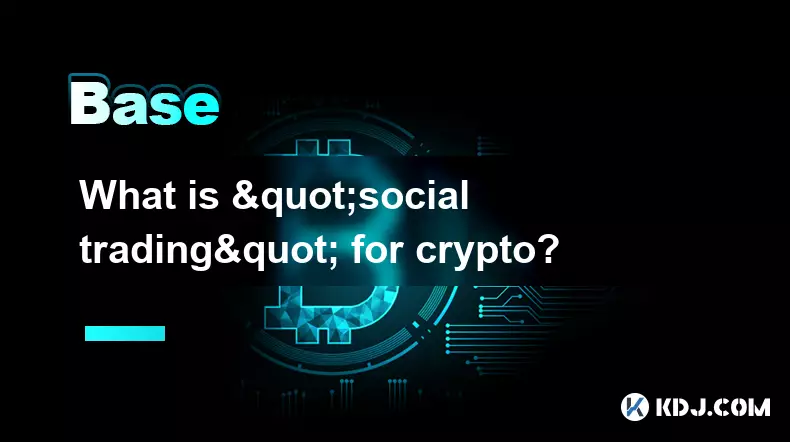
What is "social trading" for crypto?
Sep 03,2025 at 09:00pm
Understanding Social Trading in the Cryptocurrency Space1. Social trading refers to a method where investors observe, follow, and automatically replic...
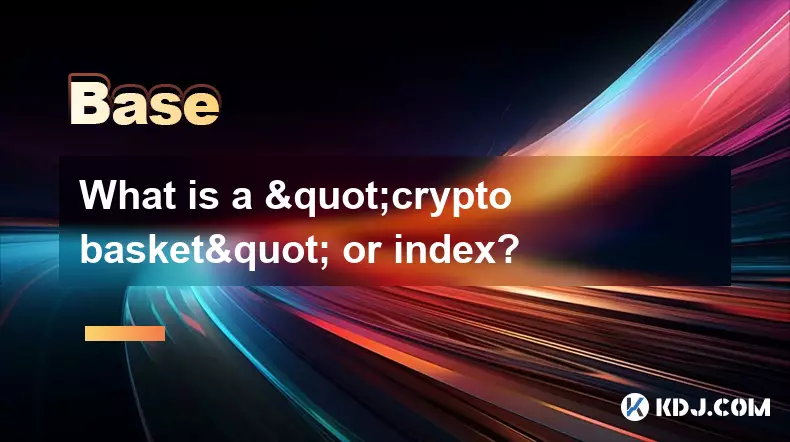
What is a "crypto basket" or index?
Sep 03,2025 at 07:01am
Understanding Crypto Baskets and Their Role in Digital Asset Investment1. A crypto basket refers to a curated collection of multiple cryptocurrencies ...
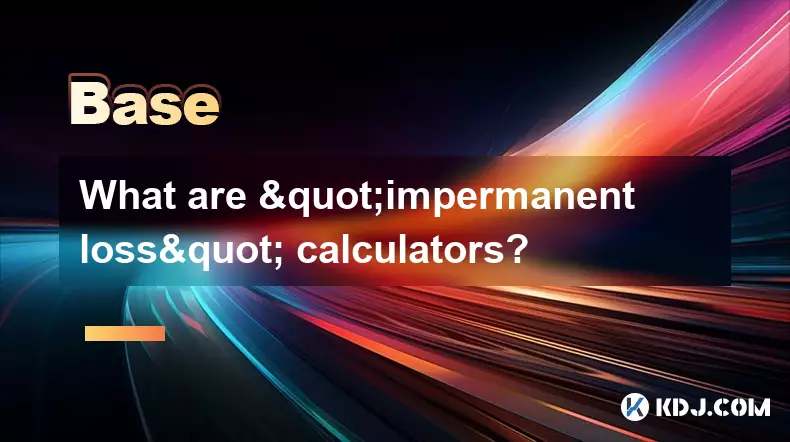
What are "impermanent loss" calculators?
Sep 03,2025 at 12:00pm
Understanding Impermanent Loss in Decentralized Finance1. Impermanent loss is a phenomenon that affects liquidity providers in decentralized exchanges...

What is "backtesting" a crypto trading strategy?
Sep 03,2025 at 10:55am
Understanding Backtesting in Crypto TradingBacktesting is the process of evaluating a trading strategy by applying it to historical market data. Trade...

What is a "crypto trading bot" and do they work?
Sep 02,2025 at 04:19pm
Understanding Crypto Trading Bots1. A crypto trading bot is a software application designed to automate the process of buying and selling cryptocurren...

What is a "copy trading" platform?
Sep 02,2025 at 07:00pm
Understanding Copy Trading in the Cryptocurrency Space1. A copy trading platform allows users to automatically replicate the trades of experienced inv...

What is "social trading" for crypto?
Sep 03,2025 at 09:00pm
Understanding Social Trading in the Cryptocurrency Space1. Social trading refers to a method where investors observe, follow, and automatically replic...

What is a "crypto basket" or index?
Sep 03,2025 at 07:01am
Understanding Crypto Baskets and Their Role in Digital Asset Investment1. A crypto basket refers to a curated collection of multiple cryptocurrencies ...

What are "impermanent loss" calculators?
Sep 03,2025 at 12:00pm
Understanding Impermanent Loss in Decentralized Finance1. Impermanent loss is a phenomenon that affects liquidity providers in decentralized exchanges...
See all articles

























![Litecoin Price Prediction [LTC Crypto Price News] Litecoin Price Prediction [LTC Crypto Price News]](/uploads/2025/09/03/cryptocurrencies-news/videos/litecoin-price-prediction-ltc-crypto-price-news/68b83c0a82563_image_500_375.webp)
